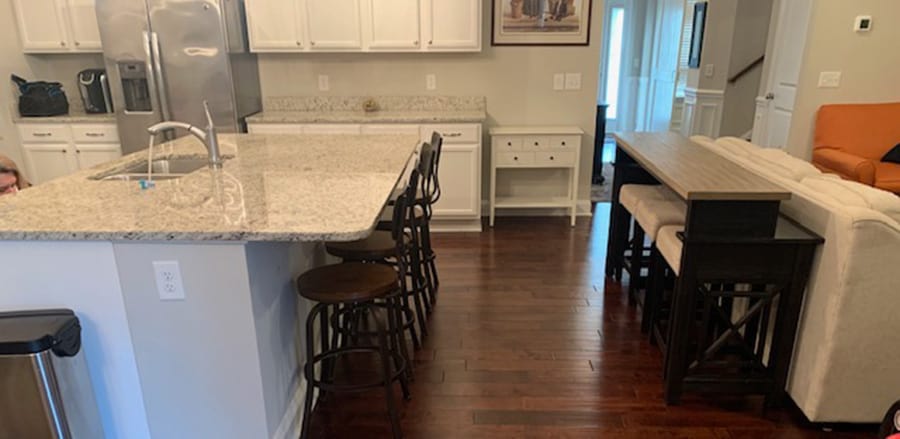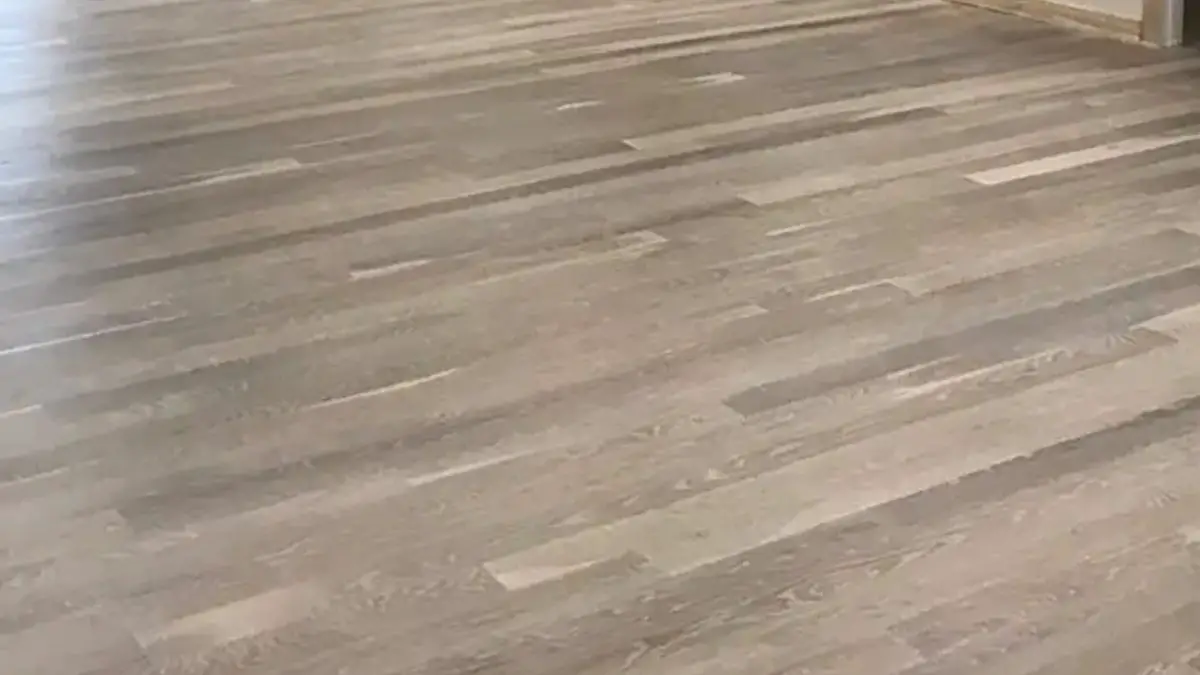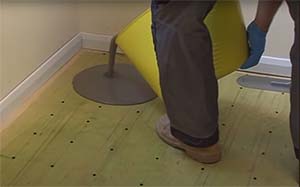
There are many things to consider when looking into any flooring, such as durability, size, and look. In many cases, finding the perfect flooring can be very stressful because there are so many types of floors available. During your search, you have found that vinyl plank flooring is trendy nowadays. With that in mind, one question remains the same: can you put any heavy objects on vinyl plank flooring?
A single vinyl plank can hold up to 500 pounds. Since most furniture will not go under just one plank, it is perfectly safe for bulky furniture and refrigerators to go on vinyl plank flooring. Vinyl plank flooring will not be damaged or cracked by home appliances’ weight due to its strong durability.
You may already know that vinyl plank flooring is immaculate in numerous ways due to it being extremely affordable, scratch-resistant, waterproof, looks like being real tile or wood, and easy to clean and maintain.
Now, who wouldn’t want that within your home? But in this article, we will be going more in-depth on heavy furniture and appliances being on your floors for the first time, if it will cause long-term damage, and what we can do if the ground just so happens to get dented.
Will Heavy Furniture Damage Vinyl Planks?
Thankfully, luxury vinyl flooring is robust, as we have quickly learned, but if you are like me and need to know every detail of something, you might wonder if these floors can be damaged by heavy furniture, especially over time?
If anything heavy-duty object drops on the floor or something large, like the stove, is on the plank for a while, it can cause dents in the planks. You might be thinking, “great! What am I supposed to do about this issue?” Fear not, because there are a couple of solutions you can do to make your floors look this way.
- First and foremost, make sure you clean your floors from any dirt, grime, or dust. Use warm water and soap, then dry the surface before moving to the next step.
- Heat your clothing iron on the cotton setting. As it heats up, place a small damp, folded wet towel over the dented area. Make sure the towel is not dripping.
- Hover the iron over the affected area between 2-3 minutes. Make sure you do not push down on the towel.
- If this does not work, use a hairdryer over the dent on the lowest setting for a couple of minutes, then take a seam roller and gently roll the dented area out.
- If all else fails, it may be time to remove the plank by getting professional help or let it be.
How Soon Can You Put Furniture On Vinyl Plank Flooring?
When you install your floors, the very next thing you will want to do is put the furniture within your home. I mean, who doesn’t want to get their house together more quickly and efficiently?
Since it is common knowledge that putting furniture on our floors is an immediate process, it is good to know that we need to wait at least 48 hours BEFORE allowing our belongings on the ground. Not putting furniture on right away enables the adhesive to dry underneath the planks.
However, if you installed your vinyl planks with a floating system that clicked together, you can immediately put your furniture down.
How Can You Protect Your Vinyl Plank From Getting Damaged?
When putting furniture or heavy appliances down, one of the first things to think of is how you can protect those floors from being damaged. As we learned briefly above, vinyl planking has scratch-resistant qualities, but that does not necessarily mean it will ever get scratched or dented.
I have luxury vinyl plank flooring, and since it is my first home, I wound up scratching it with an old chair given to me a few years back. This particular situation did not turn out well, and we wound up throwing the recliner away. That said, to ensure your floor scratching does not happen to you, whether you are moving heavy furniture or bringing it into your home, here are some key points to look out for:
- Lift your belongings if moving them: Dragging your furnishings may lead to scuffs or marks. In severe cases, the floor can even tear, mainly if you installed them floating.
- Use furniture pads: Whether you move your appliances or not, using furniture pads are the way to go, especially when you are doing your yearly clean up underneath the stove or refrigerator or need to sweep underneath the couch. Using pads will prevent any marks from happening from the protective cushion underneath the legs.
- Place rugs throughout your home: Having plastic or rubber-backed mats can stain or discolor the planks. Instead, watch out for carpets that say it is safe for hardwood. Use any rug labeled “colorfast” or non-staining, vinyl-backed mats.
- Put rolling chair mats on the ground: Even though a rolling chair may not do much at first, continually rolling back and forth will eventually damage the protective coverings. Place a PVC chair mat underneath, or do not get a rolling chair to avoid this.
What Is Vinyl Plank Flooring Made Of?
The majority of vinyl plank flooring is made of heavy-duty plastics. A synthetic material mixture formed by polyvinyl chloride resin (PVC) melted together using heat and pressure mixed with white pigments, plasticizers, fungicide, calcium carbonate, and UV stabilizers. Afterward, the vinyl mixture is added to a backing layer, securing it even further.
Most vinyl planks have been made of anywhere between 2 to 6 layers of coating, going further into detail. The layers are to protect the floors also and make them more durable. Here is a list of each layer down below:
- Topcoat: On top of having a wear layer, the overcoat, often called a “k-guard,” provides an easy-to-clean coating, perfect for animals and younger children.
- Wear layer: Provides further protection from everyday wear and tear.
- Pattern layer: After the initial protection coats, you will see the design of your flooring, which comes in many forms.
- Cushion layer: You can go with the confidence that vinyl flooring will not hurt your feet due to the cushion layer provided.
- Waterproof core: Made to be durable and of 100% waterproof material.
- Base layer: Also known as the attached underlayment, making it much easier to put your flooring down. This layer also sticks to the subflooring, which would make the floors harder to move out of place.
Related Questions:
Should Flooring Go Under Appliances?
Most folks think that it should not go down there because the flooring is unseen under the appliances. On the contrary, all flooring should run underneath any amenity except the dishwasher.
You never know if you might wind up replacing anything in the future, especially if what you live in is your forever home, or you have tenants living somewhere that has something that breaks down. It would look ugly underneath if you got another brand of something within your home, and the subfloor wound up showing for all of that flooring life!
Is It Better To Glue Or Float Vinyl Plank Flooring?
These floors are suitable whether you glue it down or keep it floating. However, gluing vinyl planks down will ensure they do not move, especially if you are carrying heavy furniture. It is important to note that while laying the floors down, make sure you leave 1/4th an inch of space between the flooring and the walls to make sure it expands and contracts with no issues. In doing so, it will help prevent buckling from happening.
How Long Does Vinyl Planks Last?
As you do your research on vinyl planks holding heavy appliances, it is essential to know your flooring’s longevity; that way, you can prepare for any other flooring you may want in the future long-term. These particular floors last anywhere between 10 to 20 years, but they last much longer than that with the correct supervision. This includes sweeping daily, light traffic within your home, and using safe vinyl plank cleaners, such as vinegar and soap.
Conclusion
In general, many floors have come a long way, but the fact that vinyl floor planking can hold up to 500 pounds on one single plank is astounding in itself, especially seeing as how the planks themselves weigh approximately 2 pounds! Even if there are a few dents along the way, these floors are easily fixable, and you can purchase them, knowing that you do not need to fear them getting ruined.







